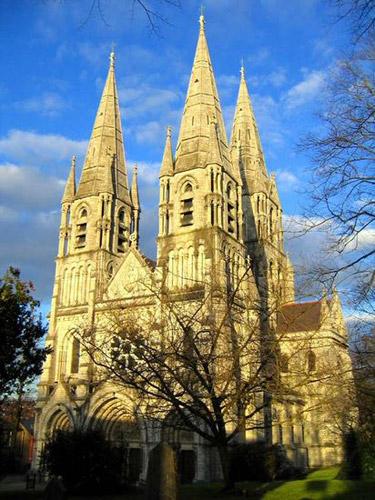Travel Postcard: 48 hours in Cork
2010-04-20 15:18 BJT
CORK, Ireland - Got 48 hours to explore Cork? Local correspondents help you to get the most out of a stay in Ireland's second city, whose tradition of independence earned it a reputation as a "rebel city".
 |
| Cork County exhibits the magnificent diversity of Ireland with its mixture of vivacious city life |
It also boasts some of Ireland's finest food.
10 a.m. - The airport is only a few kilometers from the center (volcano ash permitting) and buses or taxis will take you into the city. Alternatively, Cork is just under three hours train ride from Dublin.
For accommodation, Garnish House on Western Road, to the west of the city, has been lavishly praised for the warmth of its hospitality, while high on Military Hill to the east, the Ambassador Hotel, with spectacular views, is comfortable and sedate.
Once you've got rid of your bags, a good start is the place where, according to legend, the story of Cork began after St. Fin Barre established a monastery in 606 A.D.
Since then, there have been 11 churches or cathedrals on this site to the west of modern-day Cork and just south of the southern channel of the River Lee. (The center of Cork is on an island between the river's northern and southern channels.)
 |
| Situated close to the heart of Cork, St. Fin Barre's Cathedral is one of the most beautiful and interesting buildings to be found in the whole country. |
In triumphant French, neo-Gothic style, the present-day St. Fin Barre's Church of Ireland Cathedral, dates from the 19th century.
For a small fee, you can enter to inspect the opulent interior of red Cork marble and mosaic flooring, although the exterior is as interesting, with a main door guarded by wise virgins on one side and foolish ones on the other.
11.30 a.m. - Wend your way into the center of Cork along Bishop Street, French Quay and turn right up Barrack Street to take in Elizabeth Fort.
Built around 1626, a plaque describes it as the best-preserved urban military fortress in Ireland. It also bears witness to the intrinsic and often thwarted rebelliousness of the citizens of Cork.

 Mail
Mail Share
Share Print
Print


 Video
Video









 2009 China Central Television. All Rights Reserved
2009 China Central Television. All Rights Reserved